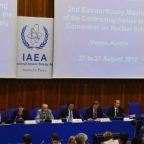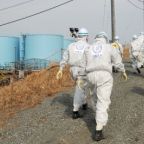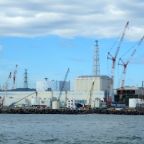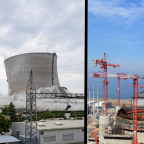Search results

Our five-part series "10 Years of Fukushima" looks at the nuclear accident in Japan from different perspectives. This week we present the lessons learned and consequences that the accident has had for nuclear power plant operation and supervision, both nationally and internationally.

The second part of our series "10 Years of Fukushima" deals with the radiological consequences of the events: How badly were the plant site and the surrounding area contaminated? How many people were affected and to what extent? What are the long-term effects of radioactivity on the region and what is the situation like today?
Physicist Dr Thorsten Stahl heads the Radiation and Environmental Protection Department of GRS, is the company's radiation protection supervisor and was part of the team with which GRS provided technical support to the Federal Government during the accident at Fukushima. In this interview, he explains what makes determining the long-term health effects of the accident so complex and how he assesses a possible discharge of contaminated water from a radiological point of view.

In our five-part series on the occasion of the 10th anniversary of Fukushima, today we look at the dismantling activities. The dismantling of a nuclear power plant (NPP) is a lengthy process.
For about 10 years, our GRS colleague Dr. Michael Maqua has been performing the duties of the Ines officer for Germany on behalf of the Federal Environment Ministry. INES stands for "International Nuclear and Radiological Event Scale", a scale for the classification of nuclear incidents and accidents. More than 70 countries are currently using INES. The graduate engineer is engaged in international project management and answers all our questions about his work as an INES officer.
Safety research for nuclear facilities is one of the main areas of GRS's work.

What happened last year in the field of nuclear energy? What developments can be observed internationally? The following overview shows the situation broken down by continent (Europe, America, Asia and Africa). Australia/Oceania is not included, as no nuclear power plants are operated there. After a brief summary, the countries that either operate reactors or are planning to start or are already building NPPs are presented for each continent.

A good ten years after the nuclear accident in Fukushima, the nuclear phase-out in Germany is about to be completed: Three plants will be finally taken off the grid this year, the last three by the end of next year. But nuclear power plants (NPPs) are by no means shut down everywhere – around the world, very different paths are followed with regard to the use of nuclear energy for electricity generation.
What has happened in the field of nuclear energy last year? What developments can be observed internationally? As in the previous year, in 2022, a total of six new reactor units were connected to the grid. On the other hand, five units have been decommissioned, three of them in the UK alone. Accordingly, the installed net electrical capacity increased by 4,089 MW to 378,314 MW.

What has happened in the field of nuclear energy last year? What developments can be observed internationally? In 2021, a total of six new reactor units were connected to the grid, including one small modular reactor – on the other hand, ten units have been decommissioned, including three of the six German units that have remained until then. Accordingly, the installed net capacity decreased to a total of 388,600 megawatts.